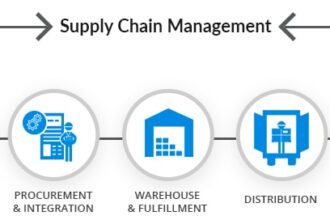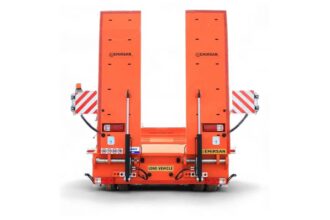When shipping goods, businesses and individuals are often faced with numerous decisions, from choosing the right carrier to deciding on delivery speeds and address types. These choices directly affect the timeliness, cost, and accuracy of shipments, particularly when sending items to diverse locations, such as major cities or remote areas like Alaska.
This guide delves into shipping speeds and address options, helping you make informed decisions for logistics success.
1. Understanding Shipping Speeds
Shipping speeds generally range from standard to expedited, offering flexibility based on your needs. Here’s a breakdown of the most common shipping speed options and their implications:
- Standard Shipping: This option is cost-effective and suitable for non-urgent deliveries. Typical delivery windows range from 3-7 business days. However, delays may occur during peak seasons or when delivering to remote areas.
- Expedited Shipping: Ideal for faster delivery, this option usually guarantees shipment within 1-3 business days. While pricier than standard services, it’s perfect for urgent parcels.
- Same-Day or Overnight Shipping: For the fastest delivery, services like same-day or overnight shipping are preferred. Businesses often use these for critical shipments, although the cost can be significantly higher.
Key Insight: For regions such as Alaska, consider shipping to Alaska options that specialize in delivery to remote locations, as standard carriers may experience delays.
2. Delivery to Residential vs. Commercial Addresses
Choosing the correct delivery address type plays a significant role in both shipping cost and efficiency. Here’s how residential and commercial deliveries differ:
- Residential Delivery: Ideal for personal shipments, residential delivery is designed for homes and private addresses. Note that some carriers apply an additional surcharge for residential deliveries due to the extra logistics involved.
- Commercial Delivery: Geared towards businesses, commercial deliveries are typically more economical. These often benefit from structured delivery times, especially in urban areas. This can enhance reliability for B2B transactions.
Pro Tip: Make sure to select the correct address classification (residential or commercial) when booking your shipment; incorrect classifications can lead to additional fees or delayed delivery.
3. The Impact of Remote Locations on Shipping
Shipping to urban areas is straightforward, but deliveries to remote regions, like Alaska or rural towns, can present unique challenges. Remote areas might face higher costs, fewer shipping speed options, and unpredictable delivery timelines.
To address these challenges:
- Use carriers with expertise in remote logistics, like FedEx Ground Economy or UPS SurePost.
- Consider carriers that partner with local delivery companies in rural areas for greater efficiency.
- Double-check delivery timelines before shipping to ensure your package arrives on time.
4. Address Accuracy and Labeling
The importance of accurate address details cannot be overstated. Errors in address formatting or incomplete details can result in delays, increased costs, or even failed delivery attempts.
Key Tips:
- Always include zip codes, apartment numbers, and clear street names.
- Validate the address with tools provided by shipping carriers before finalizing.
- For high-value packages, consider attaching secondary identification, like barcodes or QR labels.
Did You Know? The U.S. Postal Service (USPS) offers address verification tools that help correct and standardize addresses before shipment, ensuring accuracy.
5. Choosing the Right Carrier Service
Each shipping carrier offers unique advantages, so matching their specialties to your needs is essential. Here’s a quick overview of leading options:
- USPS: Best suited for small packages, P.O. box deliveries, and budget-friendly shipping.
- FedEx: Renowned for reliable expedited and international shipping services.
- UPS: Excellent for cost-saving bulk shipments and delivering to both residential and commercial addresses.
- Regional Carriers: Companies like OnTrac or Speedee Delivery offer targeted services in specific regions, often at lower costs.
Pro Tip: Use the carrier’s shipping calculator to compare rates and service speeds side-by-side, factoring in your destination and package specifications.
6. How to Optimize Costs
Shipping costs can quickly add up, especially for businesses managing high volumes or complex logistics. Here’s how to save without compromising on service:
- Consolidate multiple packages into a single shipment whenever possible.
- Take advantage of flat-rate boxes for weight-sensitive packages.
- Compare prices across carriers and shipping speeds for the most cost-effective solution.
Example: A small business in Texas shipping to Alaska may find significant savings by opting for a carrier specializing in remote deliveries.
7. Leveraging Tracking and Notifications
Transparent shipment tracking not only assures the sender but also enhances the recipient’s experience. Most carriers now offer tracking notifications via email or text, keeping everyone informed.
By taking advantage of these features, errors can be mitigated, delivery delays tracked, and customers alerted in real-time. Sharing tracking information with the recipient can also foster trust and satisfaction.
8. Planning Ahead for Seasonal Peaks
Shipping demands surge during holidays and peak shopping seasons, leading to extended delivery times and higher costs. To stay ahead:
- Consider ordering supplies and fulfilling shipments early to avoid backlogs.
- Offer customers clear expectations about shipping timelines during busy periods.
- Budget for slightly higher shipping costs in Q4 every year.
Final Thoughts
Shipping speeds and address choices can make or break a delivery, especially when dealing with diverse geographies or complex logistics. By selecting the right shipping option, validating address details, and leveraging carrier expertise, you can ensure a smoother and more cost-effective shipping experience.
If you’re shipping to remote locations like Alaska, always prioritize carriers and solutions tailored to these challenges to minimize delays. With these tips in mind, you’re well on your way to mastering logistics efficiently and affordably.

















